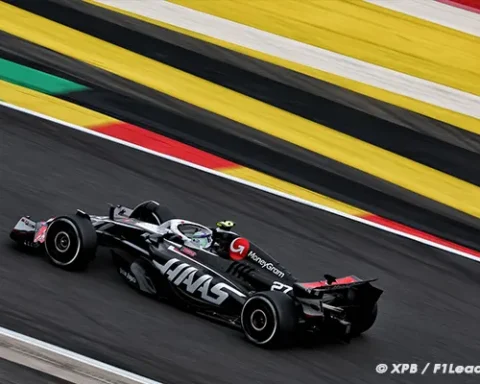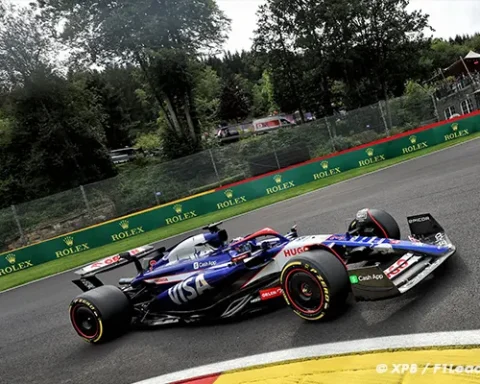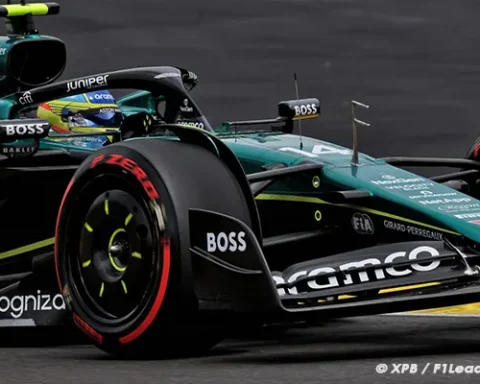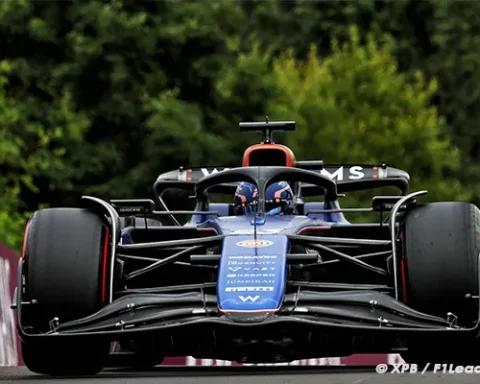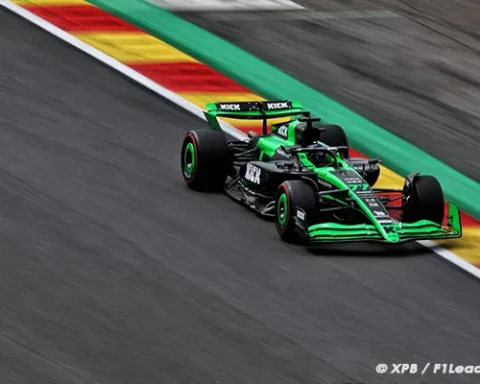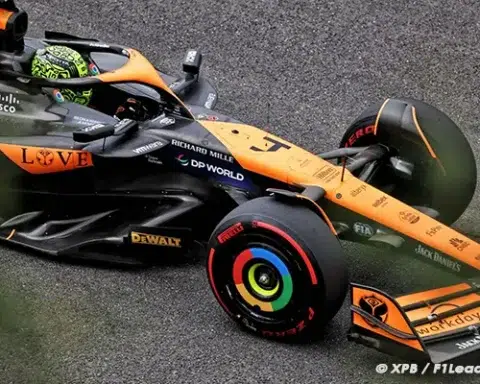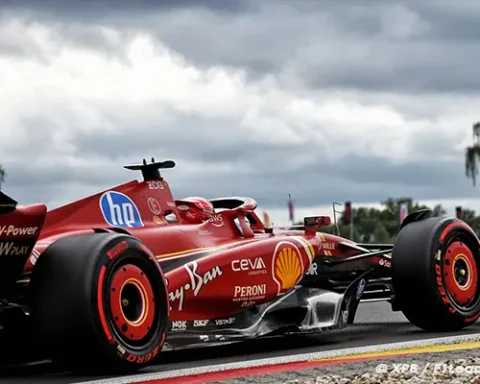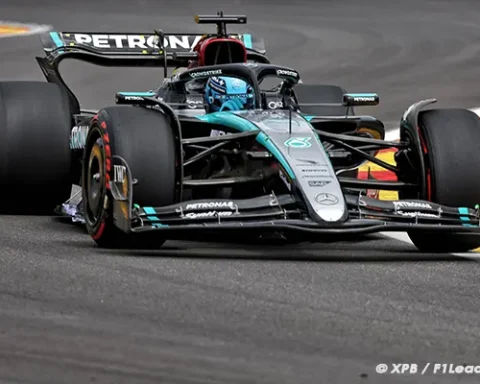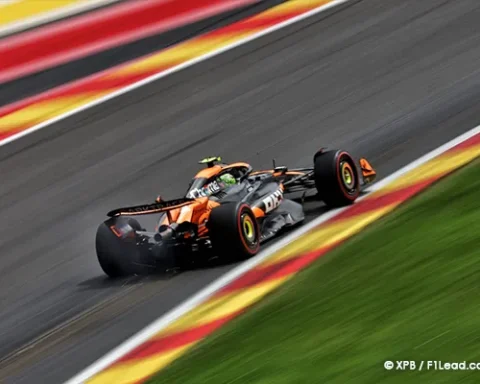This year, McLaren F1 will have an entirely new structure centered around three technical directors. Peter Prodromou, Rob Marshall, and David Sanchez will divide the tasks related to the design of the cars. Their director, Andrea Stella, explains why the team has adopted this structure.
“Before thinking about organizational charts, we want to have a functional vision of the team,” Stella said. “The essential functions are the technical aspect, where the car is designed, the production aspect, where the car is produced, and then the racing function, where we take the car racing.”
“But support functions are important. Finance is now fully integrated. Finance must be almost integrated with technology because it must stay on the same timeline.”
“The support functions must stay with you because the options you consider at the technical, production, or racing level must take into account the financial implications from the start of the design.”
“Culture is defined by example, by conversation, by asserting your values to your collaborators. But, in reality, it is built with your staff. Therefore, communication becomes essential. I say this to give an idea of the complexity. Some simple projects can run into this level of complexity.”
Management “Too Complex” for One Person
Stella explains that the programs related to new cars have become too complex, in his opinion, to be managed by a single technical director. And he specifies that this will be even more the case in 2026, with completely revised aerodynamic concepts.
“It’s really good to have someone in charge, but when you have to manage this level of complexity and detail necessary to create competitive ideas, unless that person is really exceptional, incredibly expert, and has the attitude to get the best out of people, it’s too complex. There’s so much to do.”
“From a technical standpoint, today’s cars are far from resembling those of 20 years ago. The way aerodynamics are managed today is another level of complexity. Even the complexity of construction, or the approach to performance and the concept required to think about the 2026 car, which is completely different.”
“For a single person in charge, it’s a real challenge. To some extent, you have to be very aware of the balance between management, micromanagement, and the fact of taking a step back. When you take a step back, you really have to understand. So it’s a real challenge given this complexity.”
One Technical Director Per Department
According to him, McLaren struggled to progress in recent years because there wasn’t enough technical responsibility from the responsible engineers, who were overloaded with too many tasks to focus on the crucial points that depended on them.
“At McLaren, we have struggled to achieve a steady increase in performance. We’ve had difficulty generating the basic concept, struggled to ensure stability and consistency in development, and this is because we haven’t focused enough on the key areas.”
“We have been, I would say, diluted. To focus on aerodynamics, you need to entrust responsibility to the most competent, expert, and experienced person. That’s where the technical director should be placed, because he doesn’t have to lead a department, he leads aerodynamics.”
“At McLaren, there’s an aerodynamics director who reports to the technical director of aerodynamics, but the technical director of aerodynamics has 30 years of experience, so I know that in this area there is enough specialization, enough experience, and enough leadership to raise our standards.”
Leaders with a “Global Vision”
The fact of changing this structure now isn’t a concern for Stella, because the goal is also to have technical directors ready to embark on the 2026 concept when it will be authorized.
“The vision, the knowledge, having gone through the process several times, that’s what’s needed to help raise this area to the level of the world championship. Regarding performance and concept, let’s think about the 2026 car from a blank slate.”
“You talk about aerodynamics, but if you don’t understand aerodynamics, it will be difficult. We have David Sanchez, a former aerodynamics manager, but who has a global vision of the vehicle. When he’s going to talk to Peter Prodromou, they speak the same language.”
“But I know that once David joins the team and I say to him, ‘David, can you start defining and developing the 2026 car?’, he will elevate our standards to a world level. So, it’s necessary to have a functional understanding of the team.”
“But in each of these areas, the conditions must be met to work with material worthy of a world championship, which requires enough specialization, concentration, and leadership.”
“If we just have a manager and fail to extend his influence in all these areas, we are likely to have simplicity, but lower standards.”
Stella as a “Coach” for Leaders
As the team director, Stella oversees these design departments but does not intervene in how they manage their part of the car. However, he sees himself somewhat as a coach who should manage several individuals together and sometimes defuse conflicts.
“Decisions are the easiest part of the whole process. When you follow a well-formed and well-informed process, the decision naturally follows from the good information you bring to the table.”
“In the end, if there’s a competition between two different sets of information, I’m always there. But I’m there as a leader, not to direct the technique, because as soon as I want to lead the technique, I lower the standards.”
“I don’t know as much about aerodynamics as Peter Prodromou, engineering and design as Rob Marshall, or car layout as David Sanchez. But I can coach in terms of integration if we have a conflict.”
The Italian doesn’t think he has a role similar to Adrian Newey at Red Bull, but he shares his culture of freedom given to his engineers: “It’s obvious that Red Bull has Adrien Newey, who is a special case of someone very prepared, who can influence all these areas competently, without lowering standards.”
“But when you hear about his way of working, it’s about letting people flourish, letting ideas bloom. So, it’s necessary to ensure that having one person in charge is not a ceiling. This is a bit of the philosophy we have adopted at McLaren to create the foundations of the future.”
Finding “Why” a Team is Competent
A former engineer, Stella climbed the ranks by trying to advance the teams he was in. This involved seeking performance through the origins of the teams’ success. This obviously includes, conversely, looking for the causes of failures.
“You’re right to say that I’ve always sought to understand what makes organizations successful. Similarly, what makes individuals successful? Why did Michael Schumacher have such success and why did he succeed in a team he joined when the car was far from the best?”
“He created the conditions for that team to produce the best car and then maintained it. Why was he able to do that, what are his attributes as an individual, and why did Ferrari at the time create these conditions to dominate?”
“At the same time, Fernando [Alonso] is 41 years old, he’s still here and he’s one of the most competitive. There are reasons for all this. I’ve always been interested and fascinated by the development of simple terms to explain these reasons. Because once you’ve formulated it in simple terms, you wonder if it’s relevant.”
“Within the same team, at Ferrari, I experienced a period where we were dominating and a period where we couldn’t change the trend. In 2010, we were competitive, but we lost this competitiveness in the following years. How did that happen?”
Focus on the Present: The Key to Continuous Improvement
“These are things that interest me. I’ve never thought about the pinnacle, or that I would use it, because personally, I’m very focused on the present. All I care about is what I’m doing now, which is doing a good job.”
“Develop your skills as much as possible, just focus on becoming a better engineer, a better whatever it is that you do day by day. It’s not about wondering what my next job will be or how I can use this in the future.”
“It’s only out of interest that I thought it might be useful for me to improve a little more each day. And when you have the chance to work with people or organizations that are such a strong reference, there’s a lot to delve into, to understand the reasons.”
“Introducing McLaren F1’s New Team Structure: A Closer Look at the Three Technical Directors. This year, McLaren F1 is revolutionizing its approach with a trio of technical experts at the helm. Get to know Peter Prodromou, Rob Marshall, and David Sanchez, the minds reshaping McLaren’s car design and strategy. Their collaboration under this new structure is set to bring innovative changes, guided by Andrea Stella’s vision for a functionally-focused team.” McLaren F1 Team Structure. McLaren F1 Team Structure. 2024 McLaren F1 Team Structure.

